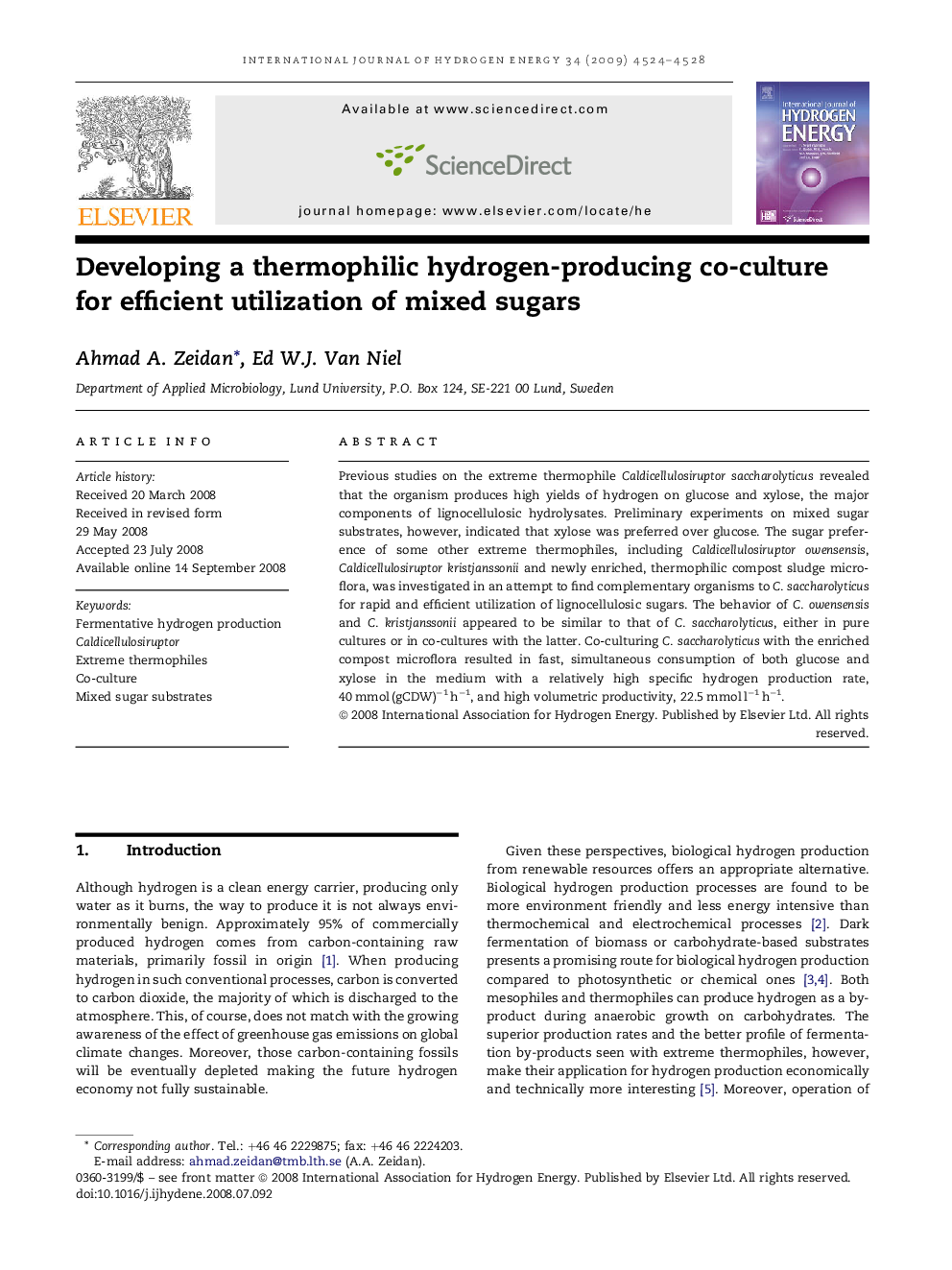| Article ID | Journal | Published Year | Pages | File Type |
|---|---|---|---|---|
| 1273865 | International Journal of Hydrogen Energy | 2009 | 5 Pages |
Previous studies on the extreme thermophile Caldicellulosiruptor saccharolyticus revealed that the organism produces high yields of hydrogen on glucose and xylose, the major components of lignocellulosic hydrolysates. Preliminary experiments on mixed sugar substrates, however, indicated that xylose was preferred over glucose. The sugar preference of some other extreme thermophiles, including Caldicellulosiruptor owensensis, Caldicellulosiruptor kristjanssonii and newly enriched, thermophilic compost sludge microflora, was investigated in an attempt to find complementary organisms to C. saccharolyticus for rapid and efficient utilization of lignocellulosic sugars. The behavior of C. owensensis and C. kristjanssonii appeared to be similar to that of C. saccharolyticus, either in pure cultures or in co-cultures with the latter. Co-culturing C. saccharolyticus with the enriched compost microflora resulted in fast, simultaneous consumption of both glucose and xylose in the medium with a relatively high specific hydrogen production rate, 40 mmol (gCDW)−1 h−1, and high volumetric productivity, 22.5 mmol l−1 h−1.
